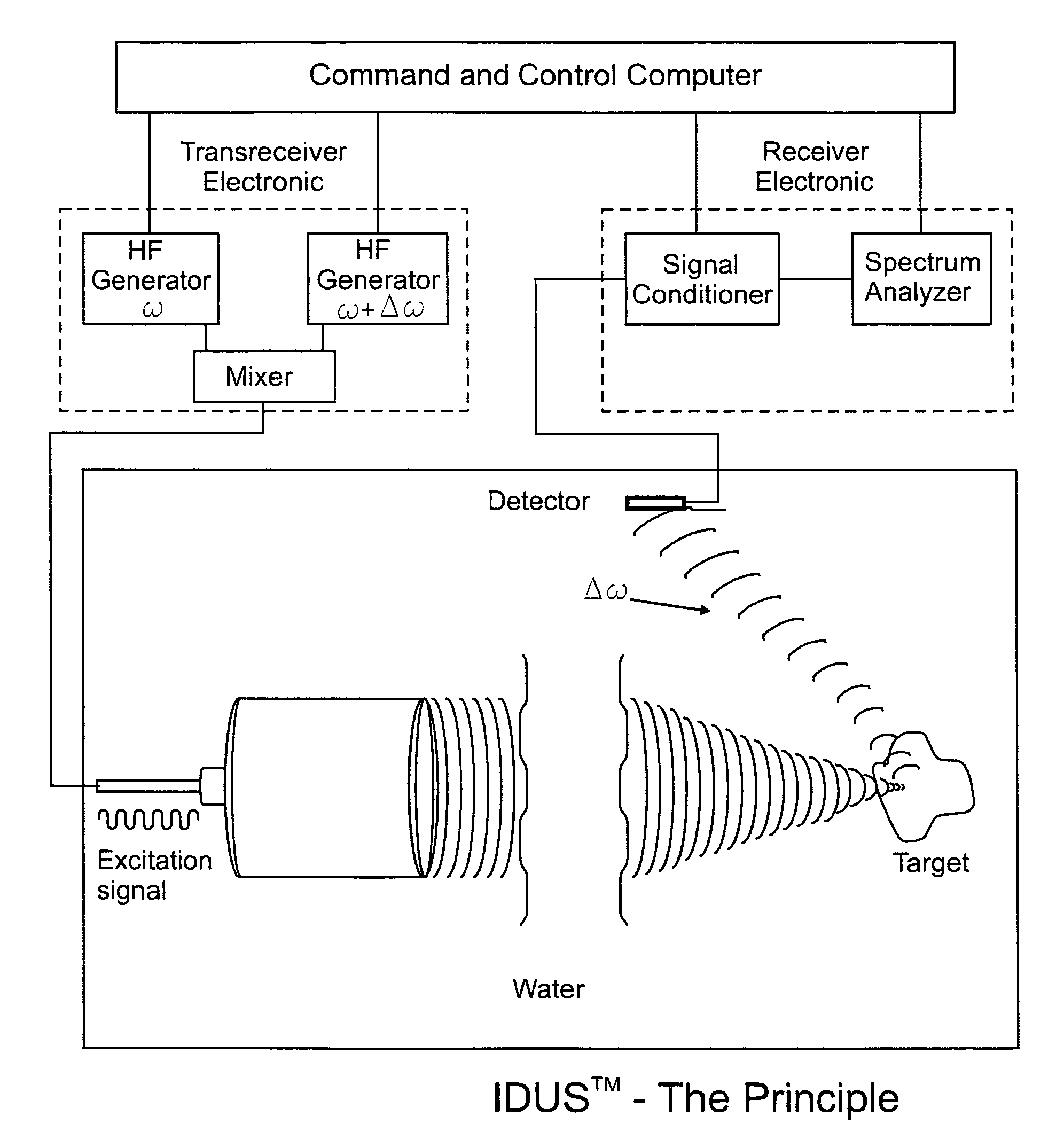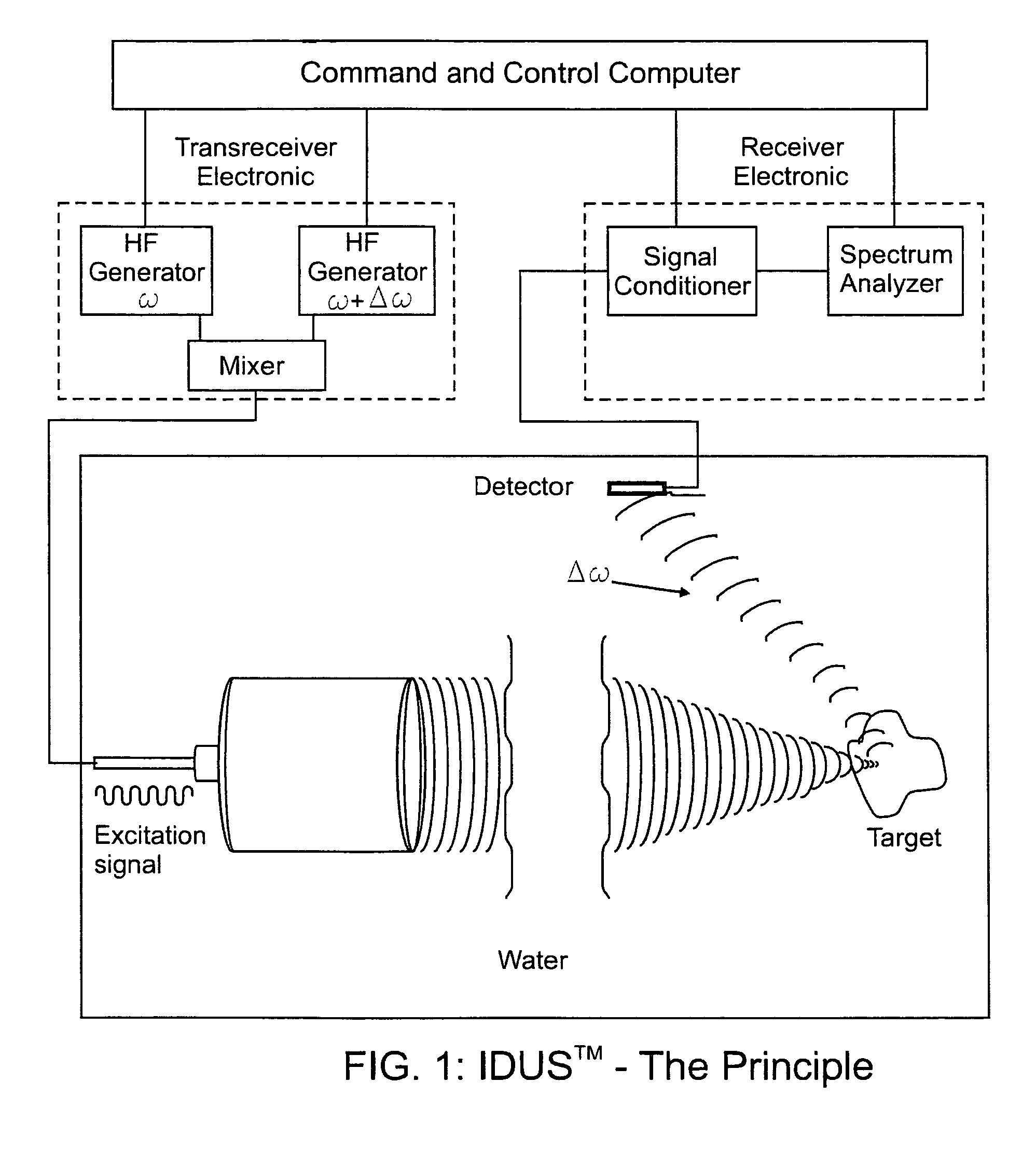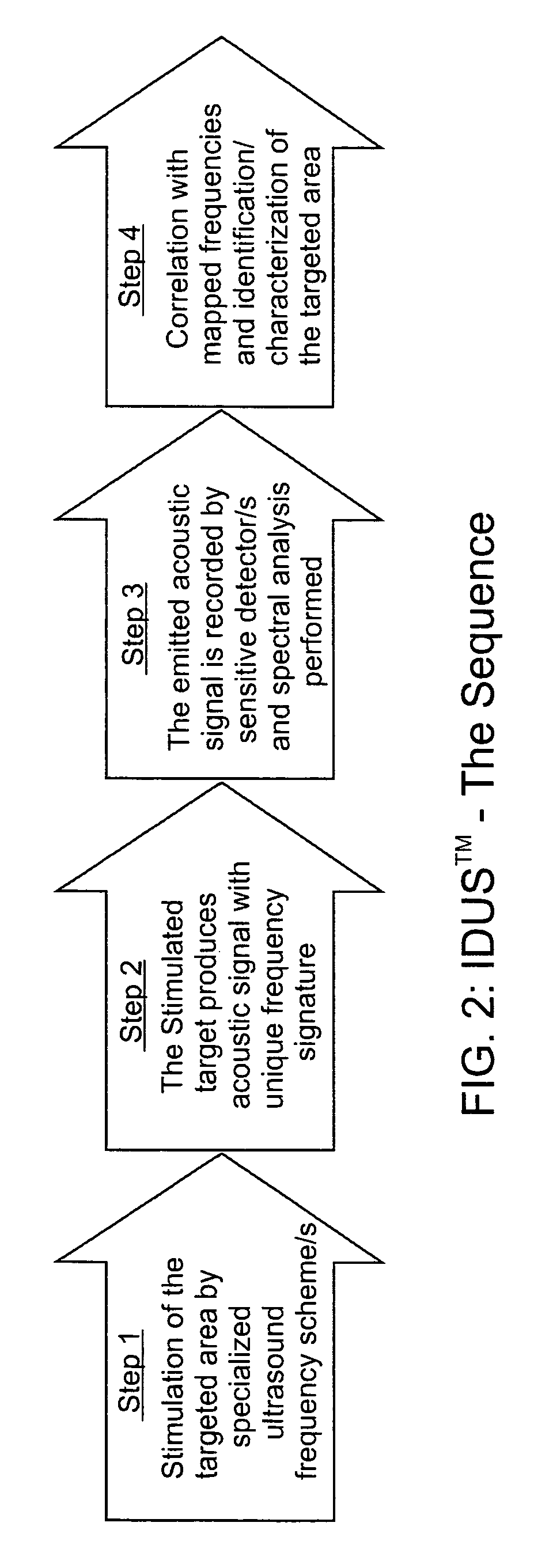Application of image-based dynamic ultrasound spectrography (IDUS) in detection and localization of breast microcalcifcation
a dynamic ultrasound and image-based technology, applied in the field of medical conditions, can solve the problems of more difficult the inability to identify a discrete mass with sufficient clarity, and the inability to image the structure of the breast with sufficient clarity
- Summary
- Abstract
- Description
- Claims
- Application Information
AI Technical Summary
Benefits of technology
Problems solved by technology
Method used
Image
Examples
Embodiment Construction
[0064]Although specific embodiments of the present invention will now be described with reference to the drawings, it should be understood that such embodiments are by way of example only and merely illustrative of but a small number of the many possible specific embodiments which can represent applications of the principles of the present invention. Various changes and modifications obvious to one skilled in the art to which the present invention pertains are deemed to be within the spirit, scope and contemplation of the present invention as further defined in the appended claims.
[0065]The fundamental concept of the present invention is depicted in the enclosed FIG. 1 which is a schematic representation of the present invention as described below.
[0066]The invention for the noninvasive remote ultrasound detection and localization of the targeted breast microcalcification masses by sensing their emanating acoustic response is based on the insonification of the breast areas with micr...
PUM
 Login to View More
Login to View More Abstract
Description
Claims
Application Information
 Login to View More
Login to View More - R&D
- Intellectual Property
- Life Sciences
- Materials
- Tech Scout
- Unparalleled Data Quality
- Higher Quality Content
- 60% Fewer Hallucinations
Browse by: Latest US Patents, China's latest patents, Technical Efficacy Thesaurus, Application Domain, Technology Topic, Popular Technical Reports.
© 2025 PatSnap. All rights reserved.Legal|Privacy policy|Modern Slavery Act Transparency Statement|Sitemap|About US| Contact US: help@patsnap.com



